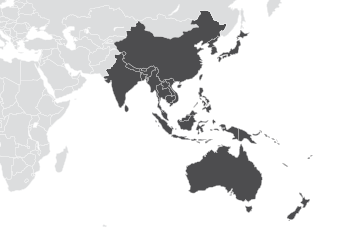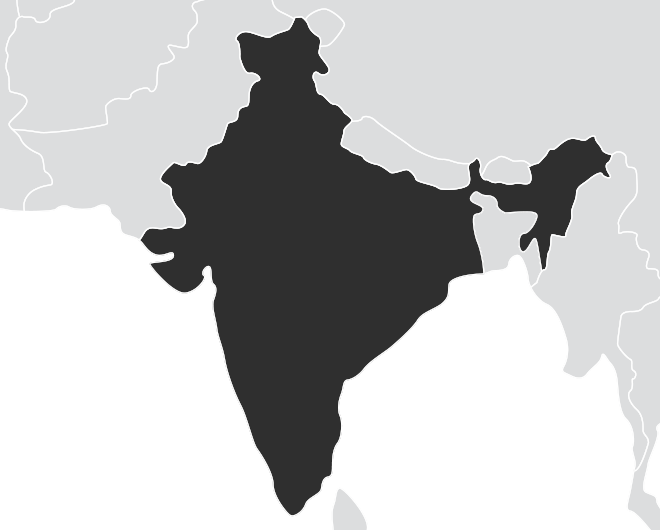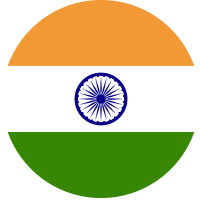The F&M Global Barometer of Gay Rights®
The F&M Global Barometer of Transgender Rights™
Country Scorecard
1 De Jure Protection of Sexual Minorities
1. No death penalty for sexual orientation
2. No life sentence for sexual orientation
3. No prison term for sexual orientation
4. No criminalization of sexual orientation
5. Hate speech legislation includes sexual orientation
6. Hate crimes legislation includes sexual orientation
7. Sexual minorities are not restricted or banned from serving in the military
8. Civil unions for sexual minorities are allowed
9. Same-sex marriage is allowed
2 De Facto (Civil & Political) Protection of Sexual Minorities
10. Freedom from arbitrary arrest based on sexual orientation
11. Head of state supports legalization of homosexuality
12. Head of state supports same-sex civil unions / same-sex marriage
13. Majority of citizens are accepting of homosexuality
14. Sexual minorities have the right to privacy
15. Sexual orientation does not prejudice the right to a fair trial
3 LGBT Rights Advocacy
16. LGBT organizations are allowed to legally register (by the state)
17. National LGBT rights organizations exist
18. LGBT rights organizations are able to peacefully and safely assemble
19. LGBT Pride events are allowed by the state
20. Security forces provide protection to LGBT Pride participants
4 Socioeconomic Rights
21. Workplace anti-discrimination laws include sexual orientation
22. Fair housing anti-discrimination laws include sexual orientation
23. Healthcare anti-discrimination laws include sexual orientation
24. Same-sex couples are allowed to jointly adopt
5 Societal Persecution
25. No known acts of murder against sexual minorities
26. No known acts of violence against sexual minorities
27. Crimes based on sexual orientation are reported to police
1 De Jure Protection of Gender Identity Minorities
1. No criminalization of gender identity or expression
2. Gender identity minorities are not restricted or banned from serving in the military
3. Country has legal recognition of gender identity
4. No physiological alteration requirement for legal gender recognition
5. No psychiatric diagnosis requirement for gender identity recognition
2 De Facto (Civil & Political) Protection of Gender Identity Minorities
6. Freedom from arbitrary arrest based on gender identity or expression
3 LGBT Rights Advocacy
7. LGBT organizations are allowed to legally register (by the state)
8. National LGBT rights organizations exist
9. LGBT rights organizations are able to peacefully and safely assemble
10. LGBT Pride events are allowed by the state
11. Security forces provide protection to LGBT Pride participants
4 Socioeconomic Rights
12. Workplace anti-discrimination laws include gender identity
13. Fair housing anti-discrimination laws include gender identity
14. Healthcare anti-discrimination laws include gender identity
5 Societal Persecution
15. No known acts of murder against gender identity minorities
16. No known acts of violence against gender identity minorities
17. Crimes based on gender identity are reported to police

Region
Asia/Pacific
Executive Summary
The U.S Department of State reported that LGBTI people face violent physical attacks, rape, and blackmail in India, particularly in rural areas.[1] The Department of State also reported that “transgender persons continued to face difficulty obtaining medical treatment,” as well as violence against LGBTI and threats of arrest from the police.[1]
NGOs such as Outright Action International, Alturi, and Human Rights Watch have recognized and celebrated India’s legal progress on LGBTI issues in the twenty-first century. However, barriers to full equality and opposition to LGBTI advocacy still remain.[2]
Background
India is a federal parliamentary republic with a population of 1.3 billion (July 2020 estimate). The current head of government is Prime Minister Narendra Modi. India gained its independence from British rule in 1947, establishing Bangladesh, India, and Pakistan. Approximately 79.8% of the population identifies as Hindu, 14.2% Muslim, 2.3% Christian, 1.7% Sikh, and 2% other or unspecified.[3]
Alturi, an LGBTI advocacy NGO, reported that cases of assault and harassment against LGBTI people have gone up during the COVID-19 pandemic.[4] Because LGBTI individuals are stuck inside while facing harassment from family and friends, and with federal restrictions on traveling, they cannot leave home and seek shelter somewhere else. As a result, the pandemic isolated LGBTI people from each other, posing dire consequences to those who were outed by their families and friends.
[4]
Legal Landscape
India’s legal landscape regarding criminalization of LGBTI same-sex relations was not fully grounded until September 2018. Prior to 2018, Section 377 introduced under British colonial period criminalized “carnal intercourse against the order of nature.”[5] Section 377 was interpreted as prohibiting “all forms of sexual activity other than heterosexual intercourse,” disproportionately affecting LGBTI individuals.[5] In 2009, two judges of the Delhi High Court declared Section 377 “unconstitutional” since “it makes homosexual intimacy in private a criminal offence.”[5] In December 2013, however, two judges of the Supreme Court overturned the 2009 ruling of the Delhi High Court, once again criminalizing same-sex relations. The 2013 Supreme Court decision upheld Section 377, ruling that “the Delhi High Court decision was “legally unsustainable.””[6]
The 2013 ruling remained in place until 2018. On the 6th of September 2018, the Supreme Court overturned the 2013 ruling, declaring that Section 377 is unconstitutional (Navtej Singh Johar v. Union of India).[6] ILGA describes India’s 2018 ruling as a “beacon of hope” for the Asia/Pacific region since the repeal of Section 377 “is perhaps the most historic event to take place in recent memory.”[6] Furthermore, ILGA reported that the overturning of Section 377 “emboldened activists” in former British colonies to repeal the same colonial rule in their countries; these countries include Malaysia, Singapore, and Sri Lanka.[6]
India’s GBTR score is slightly higher than its GBGR score. According to Outright Action International, India has legally recognized a third gender, “Hijras,” since 2014.[7] Since then, the Indian Parliament has passed several bills protecting members of the Hijra community, including transgender, gender non-conforming, and intersex individuals, from discrimination.[7]
Political Landscape
In April 2019, three transgender candidates participated in the Odisha state legislature election.[8] Although none of the candidates won, activists recognized their presence as “a step forward in the political empowerment of the transgender community.”[8] In the same month, however, India’s first openly gay politician joined the Indian National Congress: Harish Iyer. Iyer tweeted on April 9th, 2019, that he is committed to “weeding out homophobia, transphobia, Islamophobia and the politics of hate.”[9] Since joining Congress, Iyer has been working as an Indian Equal Rights Activist, empowering the LGBTI community, as well as survivors of sexual abuse.[9]
Despite this progress, the Prime Minister of India and other members of government remain silent or complicit on LGBTI issues, refusing to comment or advocate for LGBTI issues. Since the overturning of Section 377 in 2018, activists have pushed for further recognition such as marriage equality and socioeconomic protections.[10]
Socio-Economic Landscape
The US Department of State reported that “there are no protections against discrimination on the basis of sexual orientation, nor is there any legal recognition of same-sex couples” in India. Furthermore, LGBTI people are more likely to face discrimination, violence, and social rejection in rural and conservative Muslim areas.
In November 2019, India passed the Transgender Persons (Protection of Rights) bill which “prohibits discrimination against transgender persons with regard to things like education, employment, and the ability to rent or buy property,” granting gender non-conforming individuals the “right to self-perceived identity.”[11] The bill, however, requires individuals to register with the government if they want to be legally recognized as a third gender. The registration requires individuals to send proof of gender confirmation surgery, denying transgender people their right to self-determination.[11]
Semmalar, a transgender activist and a member of the Sampoorna Working Group for transgender and intersex rights, told NPR that the bill “goes against the right to dignity and bodily autonomy of trans people,” specifically flouting the 2014 Supreme Court ruling.[11] The landmark 2014 ruling indicates that people have the right to choose their gender, directing the government to provide social benefits like marriage, adoption, and social security benefits — the bill did not mention these rights.[11] In addition, Semmalar adds that HIV amongst the trans community is 26 times higher than the national average, underlining the lack of access to health and reproductive care due to discrimination, stigma, and systematic exclusion.[11]
Societal Discriminations
The Humsafar Trust, an LGBTI rights NGO, reported that within the first six months of the momentous Supreme Court ruling in 2018, “sixty-four crisis situations” were handled by them.[12] These crisis situations include incidents of violence against LGBTI people. The organization also recognized that these incidents often occur in smaller towns, where “people cling to stereotypes and traditional ways.”[12]
According to the U.S Department of State, transgender individuals continue to face difficulty in access to medical treatment. The Department also reported incidents of police crimes against LGBTI individuals, threatening them with arrest “to coerce victims not to report.”[13] However, the Department also acknowledges that several NGOs in India have been offering education and sensitivity training to police departments.[13]
LGBTI individuals are also alienated due to HIV and AIDS social stigma. The epidemic in India targets “the most vulnerable and high-risk populations” including mostly gay and transgender individuals.[13] The United Nations Programme on AIDS in 2018 reported that although new incidences of HIV decreased among the LGBTI community, “stigma related to key populations continued to limit their access to HIV testing and treatment.”[13]
Analysis
India is likely to improve its GBGR and GBTR score in the future. The Global Acceptance Index which measures LGBTI acceptance level per country through survey data, ranked India from 2014-2017, #81 out of 174 countries on the Global Acceptance Index with a score of 4.5. India is currently slightly above the average score, indicating the upward trend of increasing social acceptance compared to previous years.
Although the country’s GBGR and GBTR score are extremely low currently, the high presence of activists and NGOs in India can can help challenge oppression and discrimination against LGBTI people. The 2018 Supreme Court ruling signifies hope for both the country and the Asia/Pacific region. Representation of LGBTI individuals in Congress, social groups, sports, film, and corporations underscore the growing number of advocates for India’s LGBTI community.[14] In order to achieve full equality, however, the country must overcome social stigma and traditional gender norms.

